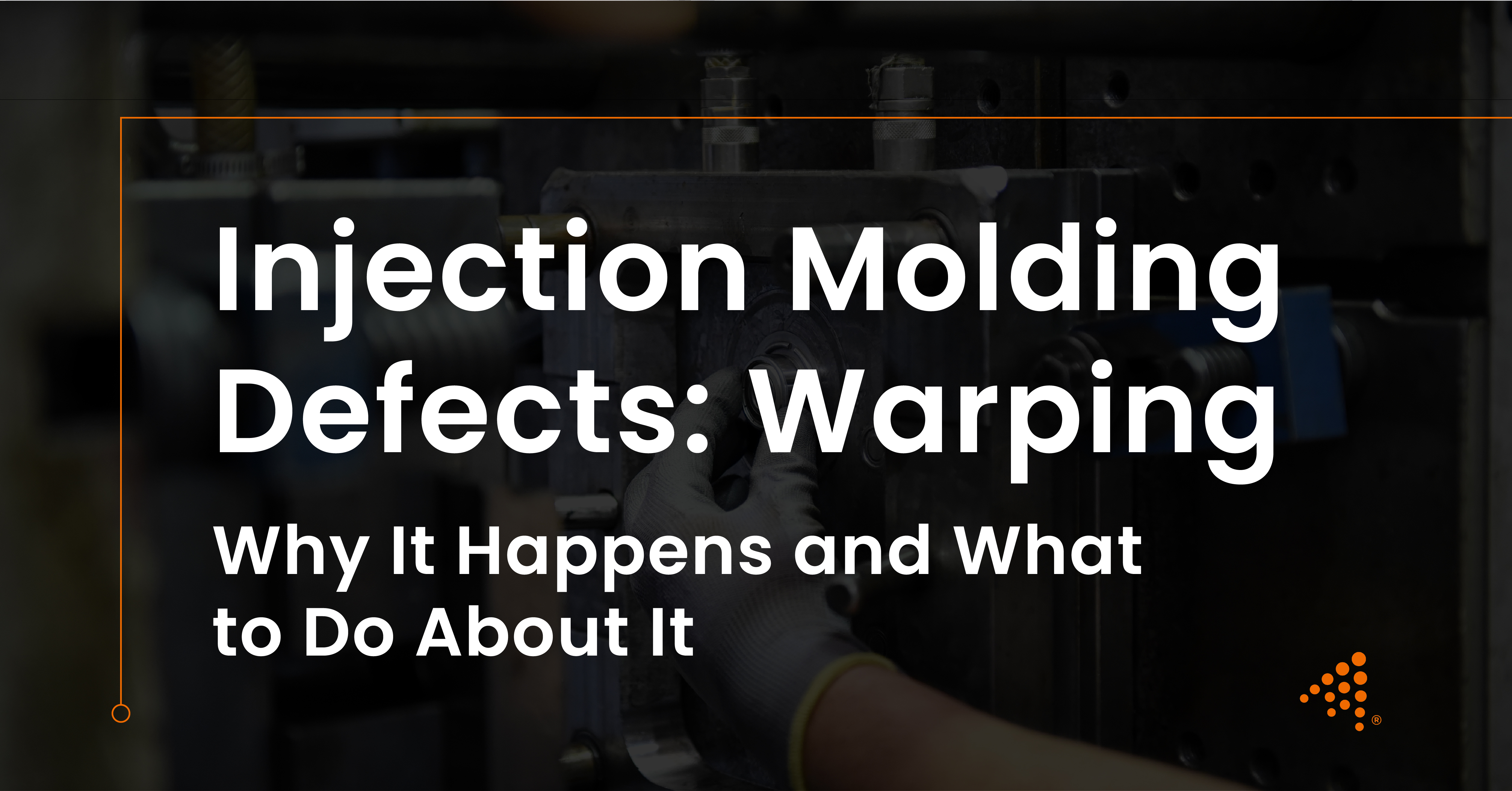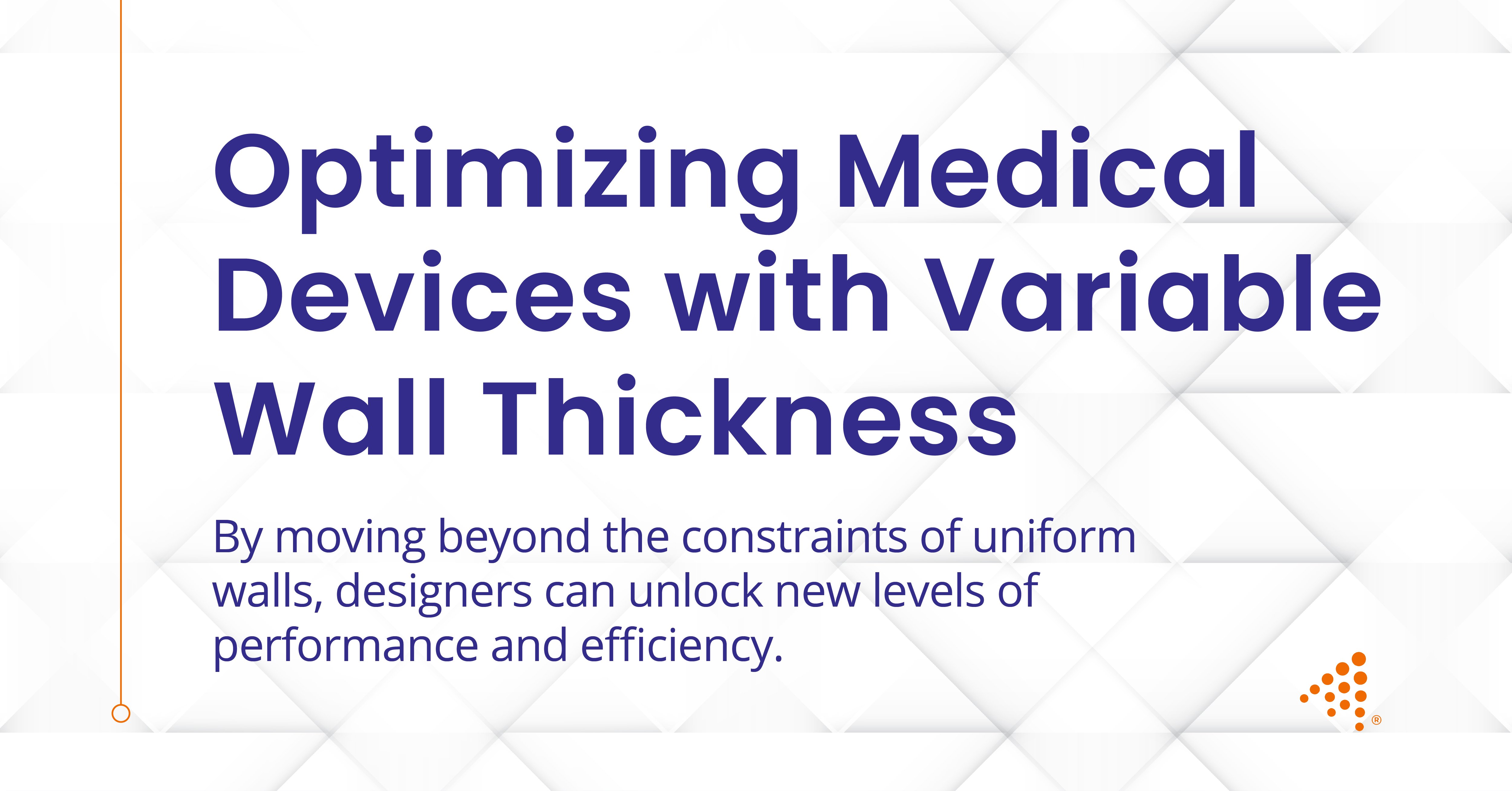Injection Molding Defects: Warping – Root Causes and Solutions
Dimensional accuracy is essential in the field of precision injection molding. However, even when a part is molded to exact specifications, it can...
3 min read
Nick Erickson : Nov 18, 2025 9:46:00 AM

The design of a plastic part for injection molding is a delicate balance of form, function, and manufacturability. Among the most fundamental design considerations is the part's wall thickness. This single parameter profoundly influences not only the final strength and appearance of the component but also the efficiency and cost of the entire manufacturing process. Achieving the optimal wall thickness is a key step toward producing a high-quality, reliable part, especially when following Design for Injection Molding (DfIM) and plastic part design optimization best practices.
While there is no single "ideal" wall thickness that applies to all injection-molded parts, a guiding principle is the pursuit of uniformity. Consistent wall thickness throughout a part is foundational to a stable and repeatable molding process. When molten plastic is injected into a mold cavity, it needs to flow and cool evenly. A uniform wall thickness facilitates this, allowing for consistent shrinkage as the part solidifies. This, in turn, minimizes internal stresses that can lead to a variety of molding defects.
This principle is central to design for manufacturing solutions and DFM services offered by experienced design and manufacturing companies. By focusing on wall uniformity early in the design stage, manufacturers reduce the risk of costly rework and improve overall efficiency in production.
Conversely, non-uniform wall thicknesses can introduce a host of problems. Thicker sections will cool much more slowly than adjacent thinner sections. This differential cooling creates internal stresses that can cause the part to warp or twist out of its intended shape. Furthermore, as the thicker section cools and shrinks, it can pull material from the still-molten core, resulting in unsightly depressions on the surface known as sink marks. Other potential issues arising from inconsistent walls include short shots, where the plastic fails to fill the entire mold cavity, and challenges with gate placement, which can disrupt the flow of material during injection molding services.
Read More About Injection Molding Defects: Identifying and Fixing Burn Marks
For most applications, a general wall thickness range of 1.2mm to 3mm is a good starting point. Walls that are too thin can be difficult to fill and may lack the necessary structural integrity. On the other hand, walls that are excessively thick can lead to long cycle times, increased material cost, and a higher likelihood of cosmetic defects like sink marks. In general, it is advisable to keep wall thickness below 5mm whenever possible, unless guided by design for manufacturing services or DFM development services.
It's also important to consider the relationship between adjacent walls. A good rule of thumb is that the thickness of an adjacent wall should be no less than 40% to 60% of the thickness of the primary wall. When changes in thickness are necessary, they should be gradual and smooth. Abrupt transitions can create stress concentrations and disrupt the flow of the molten plastic. Using chamfers or fillets to create a gentle transition between different thicknesses is a highly effective design practice, recommended in plastic injection mold design services.
The ideal wall thickness is also heavily dependent on the specific plastic material being used. Different polymers have unique flow characteristics and shrinkage rates that must be taken into account during the design phase. Below are some generally recommended wall thickness ranges for common injection molding materials:
These ranges provide a solid starting point, but the final determination of wall thickness should be made in consultation with a knowledgeable manufacturing partner. Leveraging injection molding tooling and Custom Injection Molding Solutions ensures the wall thickness is optimized for both strength and manufacturability.
There are several design techniques that can be employed to increase the strength and stiffness of a part without resorting to thicker walls. The use of ribs and gussets is a common and highly effective strategy.
Ribs are thin, wall-like features that are designed to add support and rigidity to a part. To be effective, ribs should be designed to be between 50% and 70% of the nominal wall thickness. If a rib is too thick, it can create a thick section at the base, leading to sink marks on the opposite surface. The height of a rib should generally not exceed three times the nominal wall thickness.
Gussets are triangular support features that are used to reinforce areas such as a wall-to-floor or a boss-to-floor transition. They provide a similar function to ribs, adding strength while minimizing the need for increased wall thickness.
By strategically incorporating ribs and gussets, a designer can create a part that is both strong and lightweight, while also being optimized for the injection molding process. These techniques are central to Plastic Part Design Optimization, design for manufacturing services, and DFM development services that improve performance without increasing material usage.
Need Expert Injection Molding Design Support?
Optimize your plastic part design for strength, quality, and cost-efficiency with Aprios.
At Aprios, we understand the intricate relationship between part design, material selection, and the injection molding process. Our expertise in Design for Injection Molding (DfIM), Rapid Prototyping Services, and 3D Printed Prototypes allows us to deliver high-quality prototypes and production-ready parts. Whether you require Custom Injection Molding Solutions, injection molding manufacturers, or ISO-Certified Manufacturing Company support, our team ensures your product is manufacturable, reliable, and cost-efficient.

Dimensional accuracy is essential in the field of precision injection molding. However, even when a part is molded to exact specifications, it can...

The relentless drive for efficiency and precision in modern manufacturing has placed automation at the forefront of production strategy. For...

The pursuit of innovation in medical device design is constant, with engineers seeking ways to make products that are not only effective but also...